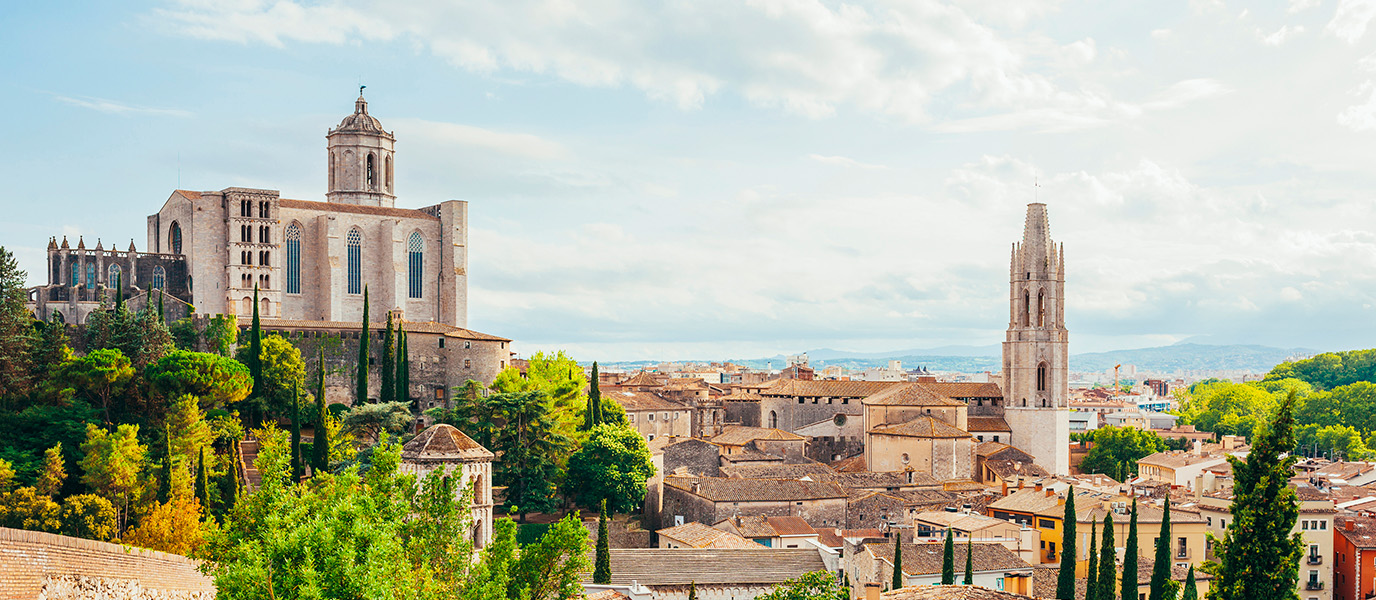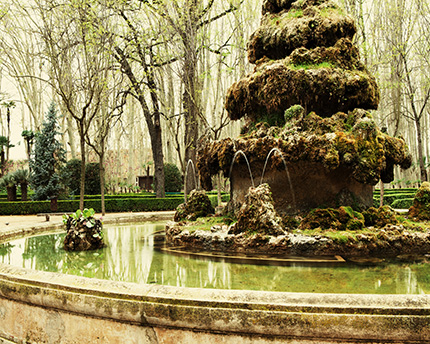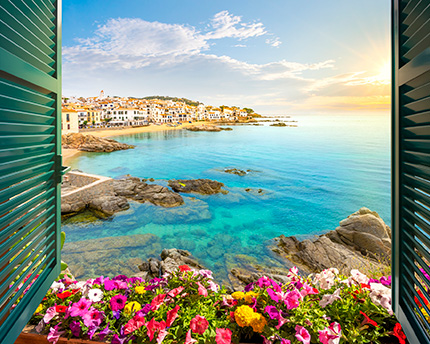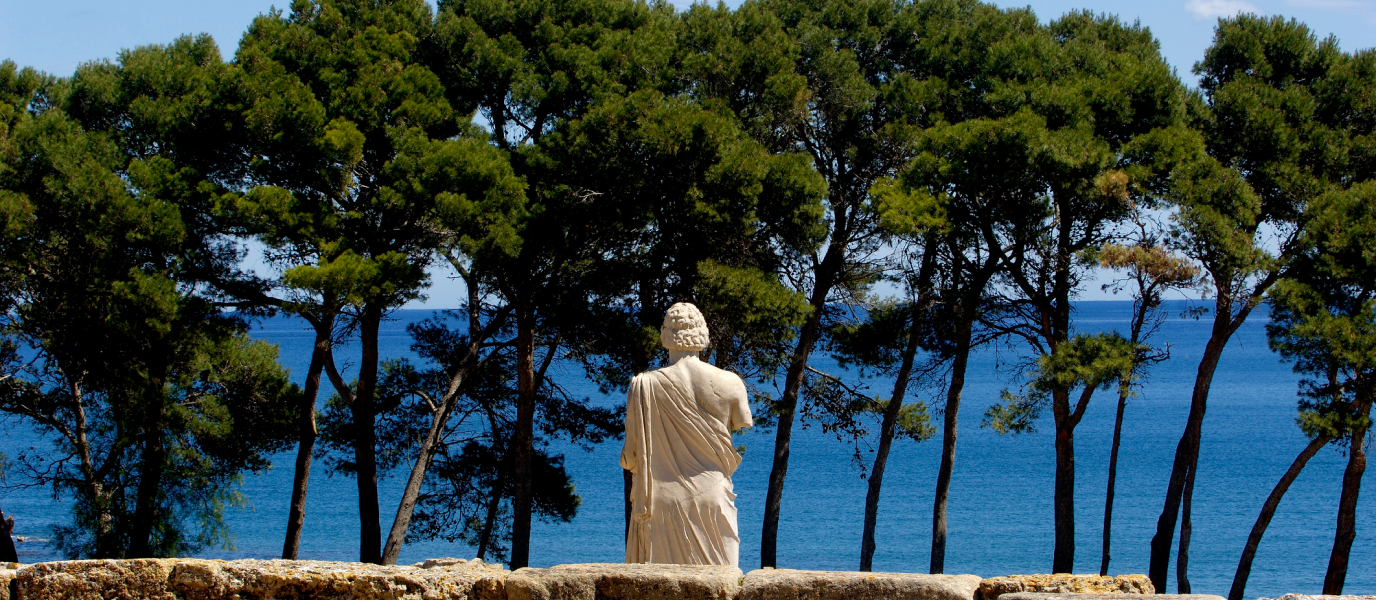The Cathedral of Saint Mary of Girona is notable for having the widest Gothic nave in the world, which measures 23 metres from side to side. The earliest parts of the temple, which dates back to the eleventh century, were built in a Romanesque style, including its 12th-century cloister and tower that was erected in 1040. However, the cathedral wasn’t finished until the 18th century. It stands next to the city’s ancient Episcopal Palace, which today houses the Girona Art Museum.
One of Girona Cathedral’s most precious jewels is the 11th-century Tapestry of Creation, which depicts different biblical scenes, symbols and allegories. The centre of the tapestry, which alludes to the book of Genesis, is surrounded by images of the different seasons, months and days. The bottom of the tapestry depicts Saint Helena’s quest for the True Cross.
History of Girona Cathedral
The Cathedral of Saint Mary of Girona has a long and eventful history behind it. Its origins can be traced back to the 8th century when a primitive Christian church that stood on its current site was occupied by Arabs and turned into a mosque. Documentary evidence suggests that the structure, which was consecrated as a Christian temple in the early 10th century, was in a deplorable state by the year 1015. It was at this point that the cathedral as we know it today – an icon of the city of Girona – began to be built in a Romanesque style.
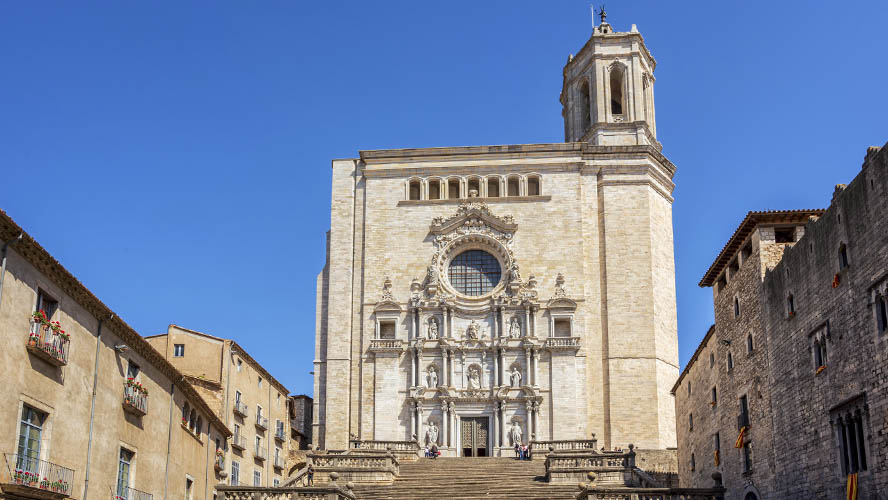
The structure of the church underwent multiple changes between the 14th and 18th centuries. Another curiosity is that the number 4 on the cathedral’s clock face is presented incorrectly: instead of ‘IV’, as it would conventionally be presented in Roman numerals, it is written as ‘IIII’.
Various scenes from the TV series “Game of Thrones” and the film “The Monk” were also shot at Girona Cathedral.
Architecture and characteristics
Girona Cathedral is notable for its robust architectural structure. After climbing the huge 90-step stairway that ascends to the cathedral’s main entrance, visitors are able to admire a wide range of architectural styles ranging from Romanesque to Gothic and Neoclassical. Examples of its Baroque architecture include the huge stairway that leads up to the main entrance, built in 1607, and its façade which dates back to the year 1730. The cathedral’s exterior walls are notable for the 14th-century Gothic portal of Saint Michael (north-facing) and the Portico of the Apostles (south-facing). The Roman cloister, meanwhile, which was crafted by sculptor Arnau Cadell, dates back to the 12th century.
The cathedral also houses the Girona Beatus – a manuscript in Visigothic script that dates back to the year 975 – which is believed to derive from the Tábara Monastery (Zamora). However, some evidence suggests that it has remained in Girona Cathedral since the 11th century. It is also home to a polychrome alabaster figure of Charlemagne and the Stained Glass Window of the Discovery – the oldest of its kind in Catalonia – which depicts St. Martin and St. Francis.
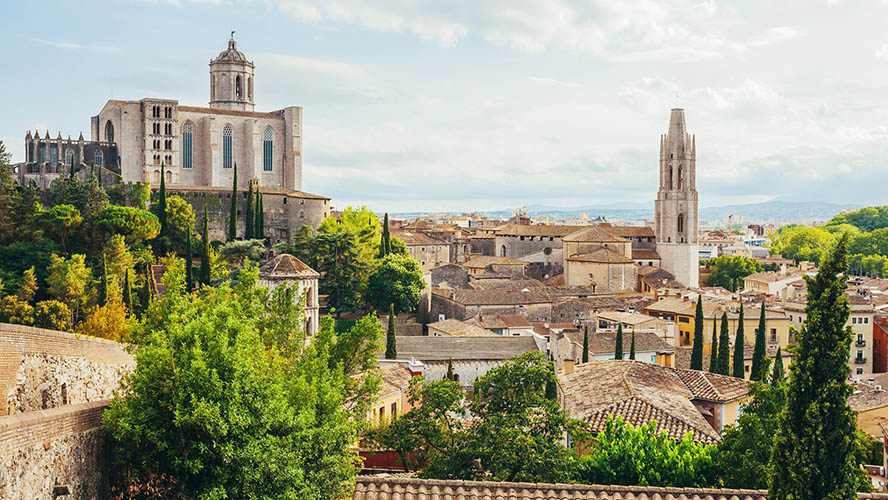
Tips for visiting the cathedral
Girona Cathedral can be visited seven days a week between the hours of 10 a.m. and 8 p.m. However, the cathedral is closed to visitors when mass is being held. Standard admission tickets cost 7 euros.
We recommend paying for a guided tour or an audio guide so that you can learn as much as possible about the cathedral and get the most out of your visit. Cultural visits are also offered of the nave, the treasury and the cloister, as well as the neighbouring Basilica of Saint Felix.
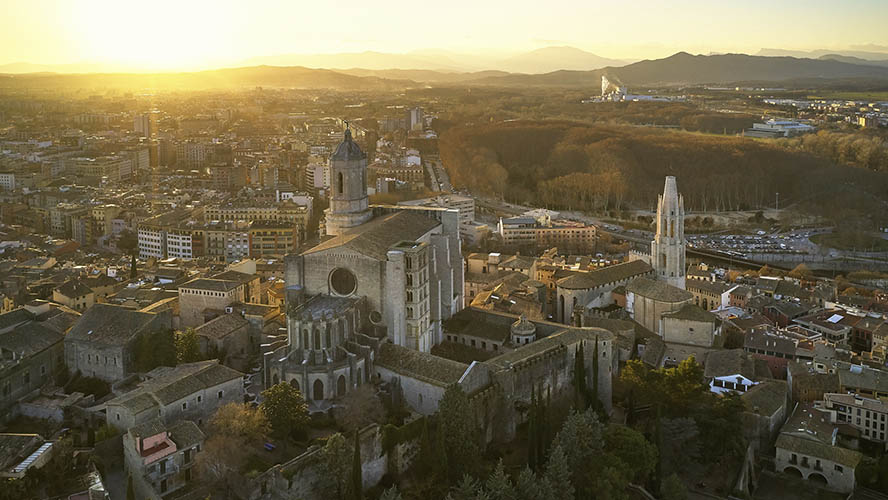
Other nearby points of interest
The Basilica of Saint Felix, which is Girona’s oldest church and one of the city’s most recognisable catholic places of worship, stands right next to the cathedral. The basilica, which is one of the most iconic Gothic buildings in the city’s old town, served as its cathedral until the 10th century. It is notable for its Baroque façade and instantly recognisable bell tower. It also houses various works of art, including eight pagan and early Christian sarcophagi from the 4th century and an alabaster representation of a recumbent Christ from the 14th century. The church can be visited every day of the year between the hours of 10 a.m. and 6 p.m., except when liturgical celebrations are being held.




































































